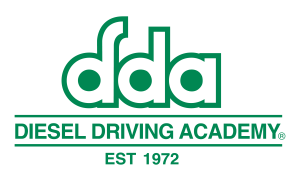When you decide that you are going back to school for your CDL, it can be confusing which Class of CDL you should get. The most common types of CDLs are Class A & B, which both allow you to perform different jobs and drive different types of vehicles. Depending on the kind of work you want to do, you will need to choose the type of CDL you get accordingly.
In this post, we will discuss the main differences between a CDL A vs CDL B, along with what each does and does not allow you to drive when you get into the truck driving industry.
Class A CDL
A Class A CDL will allow you to operate a combination of different vehicles. For example, you can haul a semi-tractor and a trailer. You can drive a vehicle with a gross weight of more than 26,001 pounds and drag a trailer that weighs at least 10,000 pounds or more. It is worth noting that if you wish to do jobs that require things such as handling hazardous material, you will need to obtain additional endorsements on your CDL to do so. The exact laws and requirements regarding endorsements vary by state, but you required to comply with the endorsement requirements outlined in your state.
After you have a Class A CDL, you can drive a variety of vehicles including:
- A tractor-trailer (18-wheeler)
- Tractor trailer buses
- Tankers
- Flatbeds
- Most vehicles that you can operate with a Class B or C CDL
Class B CDL
If you were to receive a Class B CDL, you could only drive a single vehicle weighing 26,001 pounds without a trailer attached. If you wish to drive a trailer, it is the only piece you will be able to haul at that time. Again, it is worth noting that if you wish to drive a vehicle hauling hazardous material, you will need to obtain additional endorsements on your CDL to do so. In addition, some Class B vehicles (such as School Bus or Commercial Bus) require specific endorsements. The requirements and laws will vary by state, but you will be required to comply with the requirements outlined in your state.
After you have your Class B CDL you can drive the following vehicles:
- Straight trucks
- Buses (i.e., tour buses, city buses, etc.)
- Segmented buses
- Box trucks
- Dump trucks
- Some Class C vehicles (if you have appropriate endorsements)
CDL A vs CDL B: The Advantages of Choosing Class A CDL
Earning your Class A CDL gives you a lot more options than the Class B CDL. The more options you have, the better chances you have of getting employment in the truck driving industry.
However, there are other advantages to a Class A CDL that many people may not always see, including the following:
- Jobs requiring a Class A CDL have much higher earning potentials.
- Most carriers will prefer drivers with CDL A, especially since most carriers have drivers hauling heavier loads.
- It allows the driver to operate more commercial vehicles.
- You can drive the same vehicles on a Class A CDL as you could with a Class B or C CDL along with a whole other host of additional vehicles as well.
- It allows you to drive further distances, log more miles, and get into over-the-road (OTR) trucking (the highest paid trucking jobs of all).
Having said all of this, the Class A CDL is your best bet if you plan on working for a carrier long-term and making a career out of truck driving. If you end up operating a vehicle that can also get operated under a Class B or C CDL, in most cases you will still be covered to drive those with a Class A CDL (possibly an additional endorsement needed for specific vehicles).
Get Your Class A CDL at DDA
You can start your Class A CDL training at DDA, and we will help you get started on your way to a new career that gives you more options than any other class of CDL available. We offer both Basic & Advanced training to meet your specific needs. No experience required for either program and you can complete either course in anywhere from 4 to 30 weeks, with day or night class options.
For further information on enrolling to at the DDA to get your Class A CDL, call today! 1-800-551-8900
